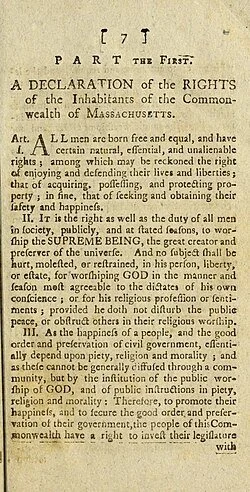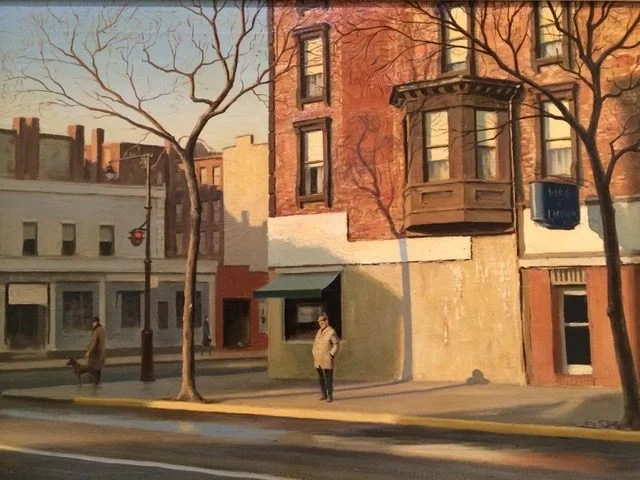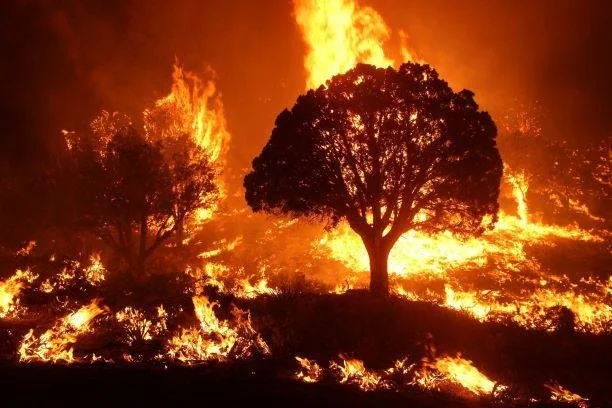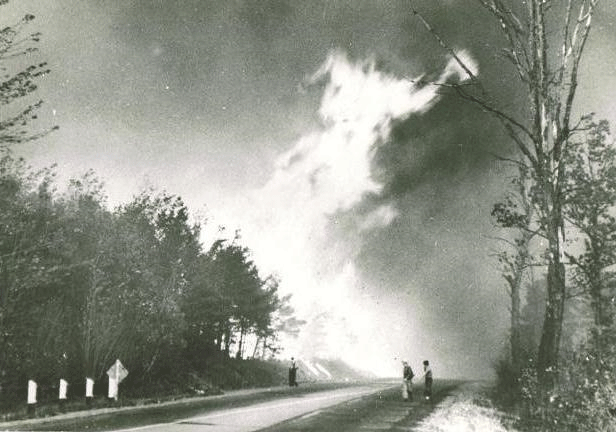
Llewellyn King: The sometimes silly and unfair world of state secrets
A typical partly declassified U.S. government document from 2004.
J. Robert Oppenheimer, “The Father of the Atomic Bomb,’’ in 1946. He lost his security clearance in 1954. (The movie Oppenheimer is well worth seeing.)
WEST WARWICK, R.I.
Beware: Classified documents don’t always hide state secrets, and security clearances are used as tools of manipulation and vengeance.
Before Xerox, if you wanted to keep a copy of something, you had to type it with a carbon sheet backing every page.
In 1969, I was commissioned by a long-gone consultancy, the Arctic Company, to write a paper on the use of hovercraft by the military, especially the infantry.
They were offering $500 for the job and, like most reporters, I was keen for the income and I signed up.
It was a time when it was believed that hovercraft —vehicles that cover the ground on a cushion of air — would be widely deployed.
I had no great insight into the vehicles or how they might be used as chariots of war. But I did have a lively imagination and access to The Washington Post library. I gorged on newspaper clippings, then wrote my commissioned piece.
After it had been accepted, and I was told by the company that the Army was “very pleased” with it, I forgot about it.
Then someone unrelated asked out of curiosity if they could see it. I said I didn’t have a copy, but I had been told that it had been mimeographed and widely distributed in the Pentagon.
I asked the Arctic Company for a copy, and they referred me to the appropriate office in the Pentagon. I was rebuffed, told that it was classified, and I could only see it if I had security clearance.
The Joint Committee on Atomic Energy, which controlled the nuclear establishment, military and civilian, used classification and security clearances to keep other members of Congress and the press out of its business; it regarded itself as the only responsible custodian of the nation’s nuclear secrets.
I was told that they were so classification-obsessed they couldn’t discuss the contents of the papers they had assembled to discuss because they were marked “Eyes Only.”
When James Schlesinger became chairman of the Atomic Energy Commission (AEC), in August 1971, he set about overhauling the classification of documents.
I was close to Schlesinger, and he told me that he thought more than half of the AEC documents shouldn’t be classified and he set about declassifying them. His argument: If you classify the trivial, all classification is degraded.
Dixy Lee Ray, the last chairperson of the AEC, became a friend of mine. I invited her to dinner at the venerable Red Fox Inn & Tavern in Middleburg, Va., established in 1728. It is a pleasant place to dine and claims to be the oldest continuously operating inn in America.
Ray went everywhere with her two dogs (Ghillie, a Scottish Deerhound, and Jacques, a Miniature Poodle), including in her limousine. The car also contained -- as I am sure the secretary of energy’s car does today -- the hotline that would be part of the launch procedure, in the event a nuclear attack is ordered by the president.
In her briefcase, Ray had an innocuous study she had wanted to give to me.
It was a blustery night, and her driver was waiting in the car in the parking lot with her briefcase on the backseat and both dogs on the front seat.
The moment that Ray opened the rear door, two things happened: A great gust of wind arose and Ghillie leapt from the front seat to the backseat, upsetting the briefcase. Crisis!
All the papers in the briefcase, many of them marked with the big red X of classified documents, blew all over the parking lot.
The three of us, in panic mode, set about scouring the bushes for them in the dark, fearing that someone would find one of them and, so to speak, the jig would be up. We could imagine the headlines.
After an hour’s search, we figured that we had gathered all the papers, and Ray did an inventory. Nonetheless, the next morning I drove out from Washington to make sure that no nuclear secret was impaled on a bush branch.
Most notably from 1954, when J. Robert Oppenheimer, who had been the scientific director of the Manhattan Project, lost his security clearance under murky circumstances, security clearances have been used as a tool of manipulation and vengeance.
If a scientist or a manager loses their clearance, they can appeal in a long, difficult and expensive process. Even if the victim appeals, the damage is done; the subject is damaged goods, publicly humiliated as morally deficient and untrustworthy.
Llewellyn King is executive producer and host of White House Chronicle, on PBS, and an international energy-sector consultant and speaker. His email address is llewellynking1@gmail.com, and he’s based in Rhode Island.
Party wherever you can
“A Dance in the Mouth of a Whale’’ (oil on linen), by Alexander Nolan, in his show “Airplane Mode,’’ at Cove Street Arts, Portland, Maine, through Oct 18. Mr. Nolan lives in the far Downeast Maine town of Lubec.
The gallery explains:
“Nolan presents a body of work inspired by ‘something funny that pops in my head, a dream, a domestic experience, or it might come from a narrative inspired by a book or movie,’ according to the artist. ‘In my paintings, I explore our human basic needs and need nots in life such as food, sex, love, joy, violence, vice, agony, greed, spirituality, and death.’’’
Center of Lubec, as seen from Canada’s Campobello Island.
A document to be very proud of
Parts of the Massachusetts Constitution.
“The Massachusetts Constitution coined the phrase ‘we the people’ … and the people of Massachusetts lived up to it. So let’s toast the people of Massachusetts — North, East, South and West — for their singular role in devising the oldest constitution in the western world!’’
— Mark D. Mason, Massachusetts Superior Court judge
Slightly correcting the judge: The Massachusetts Constitution, enacted in 1780, cites “the people of the State of Massachusetts-Bay.’’
‘The most interesting part of creation’
Michael Patterson’s painting of a Parisian marketplace, at the Lily Pad Gallery in Newport, R.I.
The Roxbury, Conn.-based artist says:
“My work is focused on several objectives. Light, reflected light and its color effects, as well as the positive and negative shapes of equal importance, creating the graphic energy of my compositions. This sets the rhythm for a piece and influences where the viewer’s eye travels and at what pace. I include curved lines with straight, organic shapes and juxtaposed geometric shapes woven together, always conscious of the line created by any color masses converging. This line flows throughout, interrupted, yet continuous. Finally, the subject of my work most always includes the human figure wherever they may be -- city streets, markets, the beach, alone or in groups. People are the most interesting part of creation."
Small state, big climate
Hurricane Carol attacks the Edgewood Yacht Club, in Cranston, R.I., on Aug. 31, 1954.
“Without going against Nature and absolutely defying the seasons, Rhode Island’s climate has as many variations as the solar system will permit.’’
— From WPA Guide to Rhode Island, 1937
Write them with a glaze
In the show “Porcelain L0ve Letters: The Art of Mara Superi0r,’’ at the Shelburne (Vt.) Museum, through Oct. 26.
—Photo by John Polak
Psychoacoustic experience
From Martin Beck’s show “… for hours, days, or weeks at a time,’’ through Oct. 5, at the Aldrich Contemporary Art Museum, Greenwich, Conn.
The museum explains that the show “explores the methods and means through which environments are captured, compressed, and represented. Using drawing, sound, video, and installation, the exhibition presents a suite of works informed by Beck’s research into ‘environments,’ a series of 11 vinyl records from the 1970s produced by the Syntonic Research Inc. label that registered the acoustics of nature and meditative sounds with high-fidelity recording technology. Marketed as psychoacoustic experiences with the potential to alter domestic and workspace atmospheres—for listeners to transcend the monotony of bureaucratic space and activity—the records laid the groundwork for an emerging industry catering to the care, efficiency, and control of the self. Beck’s interest in these records is their pioneering role as atmospheric tools for self-optimization within an ever more competitive capitalist setting.’’
‘I disregard the fear of man’ in the battle against slavery
Masthead of William Lloyd Garrison’s abolitionist newspaper
“I am aware, that many object to the severity of my language; but is there not cause for severity? I will be as harsh as truth, and as uncompromising as justice. On this subject, I do not wish to think, or speak, or write, with moderation. No! no! Tell a man whose house is on fire to give a moderate alarm; tell him to moderately rescue his wife from the hands of the ravisher; tell the mother to gradually extricate her babe from the fire into which it has fallen,b ut urge me not to use moderation in a cause like the present. I am in earnest—I will not equivocate—I will not excuse—I will not retreat a single inch—AND I WILL BE HEARD. The apathy of the people is enough to make every statue leap from its pedestal, and to hasten the resurrection of the dead.
“It is pretended that I am retarding the cause of emancipation by the coarseness of my invective and the precipitancy of my measures. The charge is not true. On this question my influence —humble as it is —is felt at this moment to a considerable extent, and shall be felt in coming years—not perniciously, but beneficially—not as a curse, but as a blessing; and posterity will bear testimony that I was right. I desire to thank God, that he enables me to disregard ‘the fear of man which bringeth a snare,’ and to speak his truth in its simplicity and power.’’
— William Lloyd Garrison (1805- 1879), an American abolitionist, journalist, and social reformer. Based in Boston, he is best known for his widely read anti-slavery newspaper The Liberator, which Garrison founded in 1831 and published in Boston until slavery in the United States was abolished by the Thirteenth Amendment in 1865.
This quote is from his (1831) “Letter to the Public’’
xxx
The Trump regime is trying to play down American slavery’s horrors and long-term sociological, economic and political effects on society, which of course linger to this day. Trump, brought up in intense privilege, said the other day:
“The Smithsonian is OUT OF CONTROL, where everything discussed is how horrible our Country is, how bad Slavery was, and how unaccomplished the downtrodden have been — Nothing about Success, nothing about Brightness, nothing about the Future. This Country cannot be WOKE, because WOKE IS BROKE. We have the ‘HOTTEST’ Country in the World, and we want people to talk about it, including in our Museums.”
Late-summer musings
Horseshoe crab heading for the water. The very, very ancient creatures are not true crabs.
Horseshoe crab dorsal anatomy.
Adapted from Robert Whitcomb’s “Digital Diary,’’ in GoLocal24.com
Shoreline walkers would do well to read famed nature writer Rachel Carson’s (1907-1964) beautiful (poetic in some places) and animal-and-plant-and-geology-and-weather-packed 1955 classic The Edge of the Sea. (There were a lot more horseshoe crabs back then, and not much plastic on beaches, but also more oil on the shore from ships, before the EPA. As kids, we loved to find sea glass.)
xxx
It’s too bad that college students must go back to school so early these days. Late August and early September have the best weather of the year around here. In my time, many of us didn’t have to go back until mid-September. Among other things this gave us more time to make money on summer jobs. (May and early June weather not so good for such work.)
xxx
It’s old people who most sense summer (and all other time) seeming to go faster every year, even as summer is getting longer climate-wise. And we’re excessively looking forward, or fearing, the next season. Too bad this can distract us from the pleasures of the moment, especially in person (not on a screen), in a constantly changing nature, such as seeing the Asters, which have several vivid colors, Black-Eyed Susans, and the purple-blue of Chicory on the roadsides.
Enjoy the sweet corn from local farms and the softer sunshine. And those noisy cicadas have a delicious nut-like taste!
Deep-fried cicadas. Better than popcorn!
So watch what you say
“Where Everyone Knows Your Name” (oil on canvas), by Jean Jack, at Portland (Maine) Art Gallery.
She says: “When I see something I want to paint the hairs on my arms stand up.”
Haunted inspiration
Painting of the reputed-to-be-haunted Fort Knox, Maine, by Seth Eastman and done between 1870 and 1875.
“I think one of the reasons {Mainer) Stephen King's stories work so well is that he places his stories in spooky old New England, where a lot of American folk legends came from.’’
— Ted Naifeh, American comic-book author
Lonely wait
“Waiting for Bus” (oil on canvas), by Stuart Grayson Garrett Jr. (1922-1996), at Southern Vermont Arts Center, Manchester, Vt.
Chris Powell: Medicaid fraud, kid cuffings, courthouse raid
MANCHESTER, Conn.
When the Republican federal budget and tax legislation was enacted in July, some Democratic officials in Connecticut screamed that it would destroy Medicare and Medicaid, that Republican claims of waste and fraud in those programs were exaggerated, and implied that there is too little waste and fraud in those programs to worry about.
But a few months earlier Gov. Ned Lamont's public health and social-services commissioner retired after it was disclosed that she had countenanced the termination of an audit of Medicaid fraud in a case in which the governor's former deputy budget director and a former Democratic state representative have been indicted and a Bristol doctor has pleaded guilty.
Just hours before the budget and tax legislation was enacted, state prosecutors charged an acupuncturist from Milford with defrauding Medicaid of $123,000.
And a few days ago the owners of a medical laboratory in Branford who were being federally prosecuted agreed to pay $1.2 million to settle Medicaid and Medicare fraud charges.
Necessary as Medicare and Medicaid are, as third-party payment systems they are structured to relieve beneficiaries of any incentive to check the charges incurred on their behalf. Such systems invite fraud and always can use more auditing, especially since the federal government's deficit is out of control and is severely eroding the value of the dollar and thereby reducing the country's living standards.
Elected officials who care about people who need government's help should be clamoring for more serious auditing of all expensive government programs to ensure that the money is well spent. Many Democrats' reflexive defense of the status quo of spending actually hurts the poor.
HANDCUFFS AREN'T THE PROBLEM: Last month elected officials and representatives of the social-services industry joined Governor Lamont at the headquarters of a youth-services organization in Norwalk to celebrate his signing of a law restricting the use of handcuffs by police on children under 14.
The law doesn't entirely forbid handcuffing children; they can still be handcuffed if they are violent or threatening violence or being conveyed to or from confinement.
Just how violent or disorderly do children have to be before police can properly handcuff them? Good luck to police officers in making this judgment and avoiding lawsuits.
Of course police officers are sometimes overbearing even as they are far more sinned against than sinning. The body cameras they increasingly wear and the dashboard cameras that are increasingly placed in their cruisers will help restrain them.
But the problem signified by the new law is not a problem of police misconduct, and the new law against handcuffing children is nothing to celebrate.
The problem is the worsening of juvenile misconduct and the growing number of children who don't know how to behave, one of the many problems that correlate with inadequate parenting. With the handcuffing law state government has decided, in essential Connecticut style, to try to address the symptom of a problem in the hope that no one will note that state government doesn't dare to investigate the problem's causes.
LAW APPLIES IN COURTHOUSES, TOO: Federal immigration agents caused a shocking scene the other day as they raided the state courthouse in Stamford and arrested two men who briefly barricaded themselves in a bathroom. The arrests appalled those people who don't believe that immigration law should be enforced, especially not in a courthouse, though people are routinely detained in courthouses on other charges.
The incident was also shocking to some because federal policy used to avoid arrests in courthouses, but the Trump administration has changed it, realizing that the law applies in courthouses, too, and that courthouses are good places for apprehending immigration-law violators.
Former state Rep. David Michel, D-Stamford, who documents immigration arrests, lamented, “It feels like we're in a state of lawlessness. When I document this, I feel like I'm in another country."
But the lawlessness is the illegal immigration, not arrests for it, and if immigration law is not enforced and all immigrants are not vetted normally, the United States soon may become another country.
Chris Powell has written about Connecticut government and politics for many years (CPowell@cox.net).
‘What it always was’
The Dry Salvages
Cape Ann
‘‘… the ragged rock in the restless waters,
Waves wash over it, fogs conceal it;
On a halcyon day it is merely a monument,
In navigable weather it is always a seamark
To lay a course by: but in the sombre season
Or the sudden fury, is what it always was.’’
From “The Dry Salvages” (some rocks off Cape Ann), by T.S. Eliot (1888-1965).
Llewellyn King: In a warming world, we need to fight fire with
Wildfire burning in the Kaibab National Forest, Arizona. New England had a bad woodland fire season last year.
Extreme forest fire in North Kennebunkport Maine, during October 1947, Maine’s most disastrous fire season.
It was blamed on extended heat and drought. By mid-October, many small wildfires spread out of control. These burned over 220,000 acres, destroyed 1,000 homes, left 2,500 people homeless and 16 people dead.
WEST WARWICK, R.I.
Wildfire takes no prisoners, has no mercy, knows no boundaries, respects no nation, and is a clear-and-present danger this and every summer as summers grow drier and hotter.
The American West is burning, across Canada there are wildfires and swaths of France, Spain, Portugal and Greece are ablaze. In 2022, faraway Siberia was ablaze.
California bears the scars of where wildfires and humans have collided and the humans and their homes have lost, recently and devastatingly in Los Angeles’s Pacific Palisades neighborhood. Experts say that even in the former moist East, conditions for wildfire are growing.
The damage to lives and livelihoods here and abroad is beyond calculation.
Olive oil and wine from Europe will be more expensive this year, so many trees and vines have burned. Humankind’s ancient enemy stalks the world: irrational, brutal and very hard to stop.
One of the largest U.S. electric utilities, Pacific Gas and Electric, facing an estimated $30 billion in liabilities from wildfires in 2017 and 2018, believed to have been caused by their equipment, filed for bankruptcy protection in 2019. Utilities have been on the forefront of wildfire suppression because some fires are started by sparking from overhead lines.
An army of people and technology is deployed in the United States to fight wildfires and still it comes up short; these tools include AI and drones, aircraft and, of course, the indefatigable but inevitably limited intervention of firefighters on the ground.
There is an additional tool: Fighting fire with fire with so-called prescribed burning or controlled burning.
I learned about this technique from J. Morgan Varner, director of research and senior scientist at Tall Timbers in Tallahassee, Fla.
For 60 years, Tall Timbers, a nonprofit group, has been doing prescribed burning – the controlled application of fire to a specific area of land to achieve defined management objectives -- in southern Georgia and northern Florida. Now its expertise on this traditional and effective tool for maintaining ecosystems and reducing wildfire risks is widely deployed and sought.
Even so, Varner said, the technique has its critics, mostly from those who have sought to suppress or avoid fire as the first line of defense.
Varner explained that this has led to decades of “fuel” (made up of dead trees and vegetation) agglomeration on forest floors. When this burns, it burns with great heat and destroys everything; whereas in a prescribed burn, the damage is less severe and more of a forest’s natural infrastructure survives.
I didn’t see a burn in progress, but I did see the aftermath of one on a hunting estate in southern Georgia, where the landlord worked with Tall Timbers. There was a strong smell of burning, some residual smoldering logs, but the land was ready for natural rejuvenation.
The idea is that with careful burning, the land is returned to its natural rhythm. This region of Georgia along the Florida border, known as the Red Hills, has seen controlled burning for a long time and the forests and the wildlife are both healthy.
Wildlife is one of the concerns about deliberate burning, but Varner says animals are naturally fire- sensitive and very adept at getting out of the way.
A prescribed burn is a carefully managed event. Conditions must be exactly right: wind, humidity, the nature of the vegetation, and the amount of fuel on the ground.
The ideal burn area, according to Varner, is 40 acres and it is done in the spring or the fall, not in the summer heat. A team of experts surveys the area of the burn and calculates the behavior of the fire before ignition.
Although prescribed burning has ancient history and a lot of scientific evidence supporting it, it isn’t everyone’s solution. I asked the president of a West Coast utility about using it and got a curt reply, “No way.”
Looking at a beautiful stand of trees, I find it hard to imagine deliberately setting it alight, although I am convinced that fire has to be used to fight fire; that periodically in nature there is wildfire, and it is part of a natural cycle. I’m beginning to take note of the dead trees among the living ones.
If summers get even hotter and drier, more radical solutions to fire will have to be employed, including fire.
Llewellyn King, based in Rhode Island, is executive producer and host of White House Chronicle, on PBS. His email is llewellynking1@gmail.com. He is also a celebrated international energy-sector consultant.
It was very nice for a couple of weeks
Giving up on summer at a Camden, Maine, resort motel.
— Photo by Robert Whitcomb
Massport wants to make Logan more important
Satellite view of Logan last December.
Edited from a New England Council report:
The Massachusetts Port Authority (aka Massport) seeks to make Logan International Airport one of the top five “mega airports’’ in the United States. In 2024, Logan was ranked 10th out of 20 large U.S. airports.
Richard Davey, CEO of Massport, says the agency hopes that Logan will become “a top three-to-five mega-airport in the United States.’’ While there is little room to expand terminal infrastructure at Logan, Massport plans to focus on upgrading the parking garage in a nearly $450 million renovation.
Delta Airlines and JetBlue Airlines are the two largest airlines operating out of Logan. Both hope to expand their international services as the airport continues to grow.
Autumn like a spy
Coming, in The Berkshires
— Photo by Andy Anderson
“This was one of those perfect New England days in late summer where the spirit of autumn takes a first stealing flight, like a spy, through the ripening country-side, and, with feigned sympathy for those who droop with August heat, puts her cool cloak of bracing air about leaf and flower and human shoulders.’’
— Sarah Orne Jewett (1849-1909), Maine-and-Boston-based novelist and short-story writer.
In the eye of the owner
“Headlands House” (oil and grease pencil on aluminum), by Kurt Ankeny, in his show at Kingston Gallery, Boston, Sept. 4-28.
He explains:
“These paintings represent the early stages of my reintroducing narrative into painting via the language of comics. By default, I suppose that makes it a strain of pop art but it’s not a loudmouthed huckster, three-ring-circus type of pop. I’m interested in using all the brush-language that has developed over the last sesquicentenary and keeping my color palette very in tune with our current estranged relationship with true darkness.’’


























